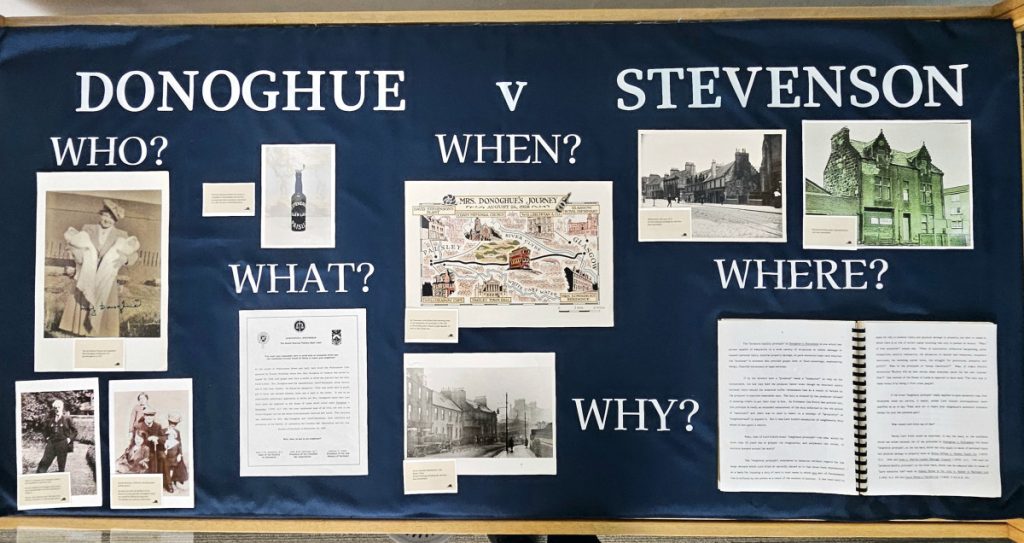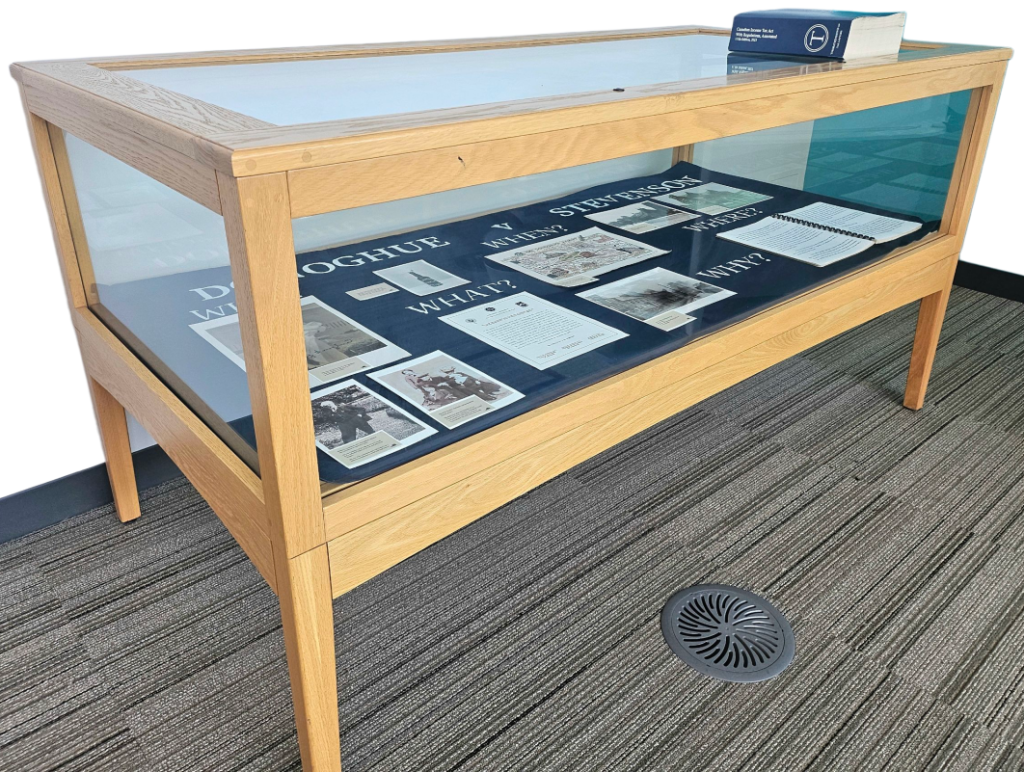Posted on: October 7, 2025

As the fall term unfolds, we are busier than ever. From new displays to presentations, here’s what’s been going on over at the TRU Law Library in Old Main.
New Display in the Law Library Reading Room
Recently, the Paisley Irregulars donated pictures and memorabilia related to the Donoghue v Stevenson, [1932] AC 562 decision. This case is one of the most influential cases in the development of modern tort law, particularly in establishing the principle of negligence and the duty of care. May Donoghue became ill after drinking ginger beer that contained a decomposed snail. She sued the manufacturer, David Stevenson, despite having no direct contract with him.
The House of Lords ruled in her favour, with Lord Atkin introducing the “neighbour principle”—the idea that people owe a duty of care to those who could reasonably be affected by their actions. Drop by the Reading Room in Old Main to check out the display!


Photos by Jesse Dana, library technician at TRU Library
Legal Writing Comparison Series: Learning by Example
TRU’s Law Librarian, Michelle Terriss, created a series of practical legal writing examples for students. This series presents three versions of the same legal writing task: one done poorly, one done adequately, and one done exceptionally well. Each version is accompanied by annotations that highlight specific strengths and weaknesses, helping students understand how to improve their own writing.
Structure of Each Entry
The Writing Task
A legal memorandum (e.g., “Draft a memo advising a client on negligence liability”).
Three Sample Responses
Poor Example: Contains common errors such as vague language, poor structure, lack of legal reasoning, or incorrect citations.
Adequate Example: Meets basic expectations but lacks clarity, precision, or persuasive power.
Excellent Example: Demonstrates strong organization, clear and concise language, accurate legal analysis, and proper citation.
Annotated Commentary
Each version is annotated with comments explaining:
- What works and what doesn’t
- Why certain choices are more effective
- How to revise and improve
- Tips on tone, structure, and legal accuracy
This series is designed to help students build confidence and competence in practical legal writing by examining real examples of work at varying levels of quality. Through side-by-side comparisons and detailed annotations, students will learn to identify the hallmarks of strong legal writing, such as clarity, structure, precision and persuasive reasoning. They will also learn to recognize common pitfalls, including vague language, poor organization and weak analysis. By engaging with the commentary and revising their own work, students will develop essential skills in self-editing and peer review. Over time, they will gain the tools needed to produce professional-level legal documents with assurance.
Trauma-Informed Legal Writing Presentation
Michelle Terriss delivered a presentation on Trauma-Informed Legal Writing for the Amici Curiae (AC) Friends of Court recently. The presentation was grounded in writing about the Indian Boarding Homes Class Action. It called for a trauma-informed approach that centres respect, clarity and sensitivity. Legal writers should use plain language to make client-facing documents accessible, avoid distressing content and communicate with care. Rhetorical awareness is also essential, including attention to audience, purpose and historical context. Choosing the right register helps maintain a tone that is clear, neutral and appropriate for the subject matter. These practices support survivors and uphold ethical standards in legal communication.
For more information on the Law Library or to book an appointment, please reach out to Michelle Terriss, JD, MLIS at mterriss@tru.ca.
Feature photo: Old Main by Thompson Rivers University, 2021. CC BY-NC-SA 2.0

